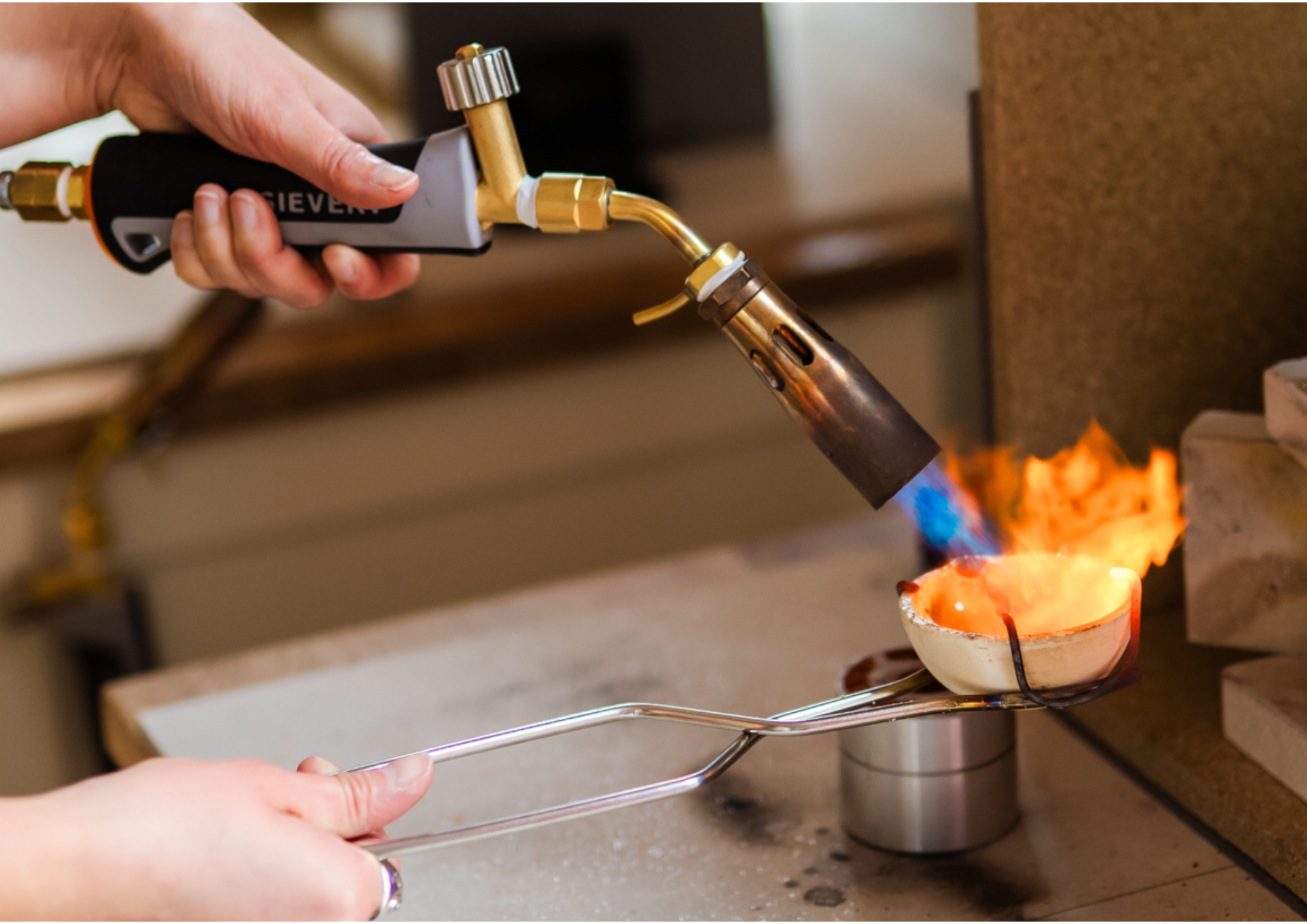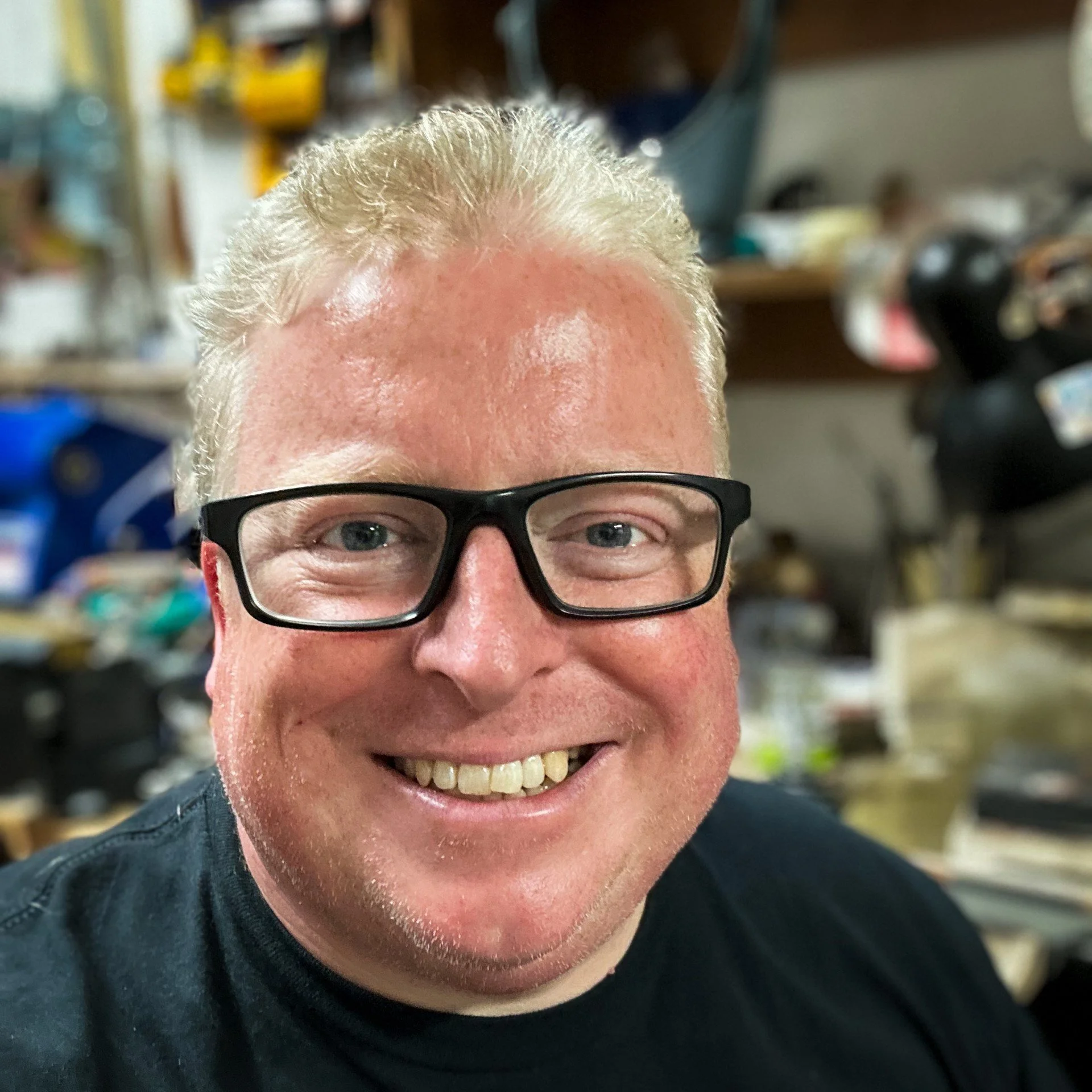sandcasting
I am excited to introduce a much anticipated brand new course - Sandcasting.
What is sandcasting?
Sandcasting is a traditional metal casting technique that uses a special type of fine sand to create a mould. A model (often made of wax, metal, or another solid material) is pressed into the sand to create an impression. Molten metal is then poured into this cavity, and the metal takes on the shape of the original model once it cools and solidifies. After breaking away the sand mould, the rough casting is revealed and is refined through filing, polishing, and finishing.
Sandcasting is for you if you love the idea of capturing organic textures and unique surface details. It is an adaptable method of jewellery making for small-scale production or one-of-a-kind pieces.
On this brand new online course from Jewellers Academy, you will learn how to sandcast your own jewellery.
What you will learn on this course:
How to set up your sandcasting area
How to prepare your mould
Seasoning your crucible
Creating your casting space
The casting process - heating the metal and pouring
Casting a ring and a pendant
Casting heat proof stones in place
Cleaning up your castings
Health and safety for sandcasting
Who will you learn from?
Meet your tutor Iain sainsbury
In 2018, after two decades in the pharmaceutical industry Iain left his career through burnout and found designing and making jewellery during his recovery.
He is a fine jeweller who centres his work around mixing rough sandcasting with fine jewellery techniques to create one-of-a-kind pieces. He reimagines iconic designs, such as sculptures, or jewellery styles using beach sand to create contrasting textures, and gemstones to add emphasis and colour. He has completed both the Fine and Advance Diplomas with Jewellers Academy and has since exhibited at national shows such as Goldsmiths North and Made Brighton. In 2025 he was shortlisted for the NAJ Awards for "Collection of the Year” with his ATOMIUM collection.
All his pieces are handmade in his workshop with ethically sourced gemstones and either single mine origin or recycled precious metals.
Note, these photos are of the casting process but are not from the online course
What do I get?
When you enrol on this course you get:
Ongoing access to comprehensive video lessons, guiding you through all the techniques, tips and tricks
Downloadable course notes to work alongside the videos
Full list of kit and materials to learn the techniques (you can find that below if you want to check before you join the course)
Access to our supportive community of jewellers and tutors to help you at every stage of the process
Access to the videos 24/7 - you can stop, pause, rewind and replay as much as you like
Excellent close-up shots to see what is happening in each step so you don't miss a thing
Ready to enrol? This course is just £99 for lifetime access but during our launch you can get 50% off, that’s £49.50.
Click the button below to enrol now and get started straight away!
QUESTIONS?
Is this course suitable for beginners?
This course is intermediate level and designed for jewellers with some experience with making silver jewellery including sawing, filing and soldering.
We recommend taking the Silver Jewellery Workshop and Soldering Masterclass first or already be able to make the projects on these courses.
What tools and materials do I need to make this project?
Here are a list of tools and materials used in this project. We always recommend that you watch the course through before deciding what to order as you will have a good idea of the type of jewellery you would like to make.
Tools
Basic Jewellers Toolkit (including 2/0 saw blades) and polishing kit
Sand casting mould
Sand (Delft clay is the best sand)
Crucible and holder
Borax powder (or use borax cone)
Talcum powder/cornflour and soft paintbrush
Torch e.g. propane/mapp gas torch or ideally a Smiths Little torch with number 7 tip (especially for large volumes of metal)
Tray to collect sand
Solder pick
Metal drinking straw
Metal ruler to cut sand
Scalpel
Area to heat your work - soldering blocks/mats
Safety pickle
Tweezers
Pawpaw ointment - for sticking stones in place.
Apron
Closed toed shoes
Respirator
Leather gloves
Eye protection e.g. safety glasses are recommended
Welding goggles if working with gold or platinum
Fire extinguisher and fire blanket
If you plan to do a lot of casting then Iain recommends:
KNIPEX 7122200 Comfort Grip Angled High Leverage Cobolt Cut (available from Amazon)
Materials
Metal for melting - you can use scrap but it is recommended to add 30-50% new casting grain
Heat proof stones for cast in place project




